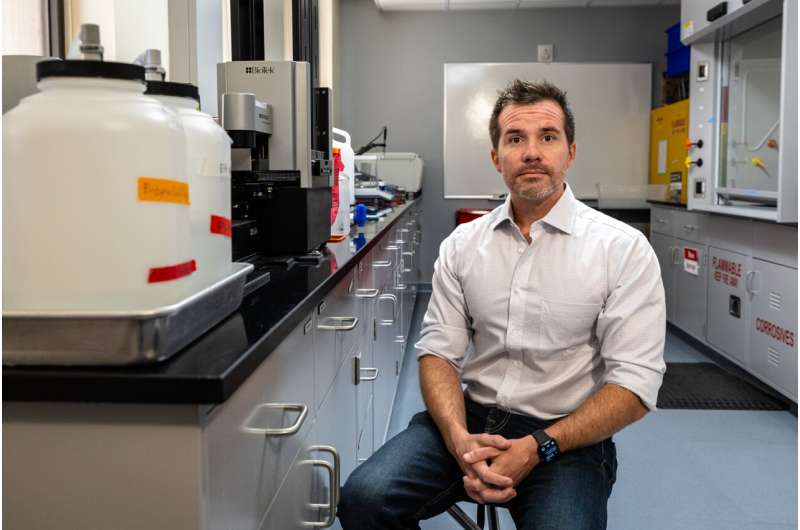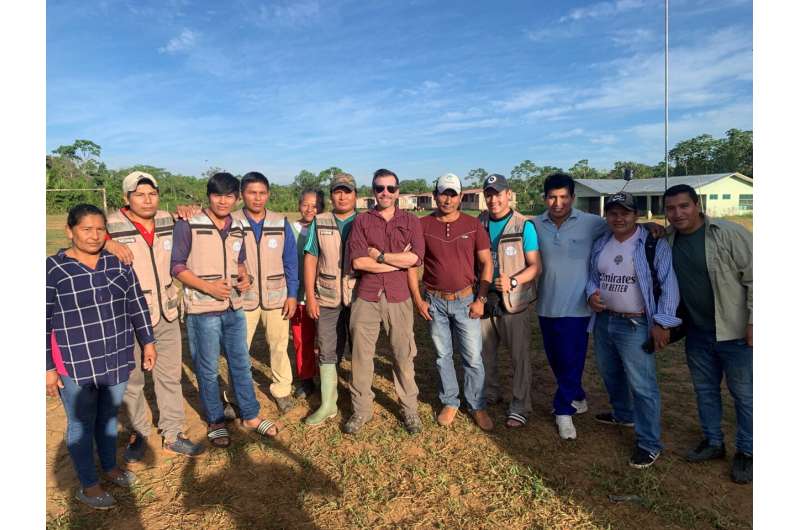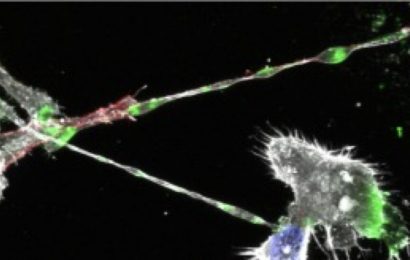
Previous research has revealed that the Apolipoprotein-ε4 (APOE-ε4) allele increases the risk for a variety of diseases in aging populations, specifically Alzheimer’s and cardiovascular disease. Yet despite its negative effects, this allele remains prevalent in approximately 20% of the human population. In a quest to determine how this negative allele is surviving natural selection, a group of researchers have discovered that the APOE-ε4 allele is associated with increased fertility in women.
In a new paper titled “Apolipoprotein-ε4 is associated with higher fecundity in a natural fertility population” released today in Science Advances, the authors worked alongside the Tsimane (Chi-mahn-eh) community in Bolivia, a forager-horticultural society, to look at the effects of the allele through an evolutionary anthropological lens.
To do so, lead author Benjamin Trumble, who is an associate professor of evolutionary anthropology at Arizona State University’s School of Human Evolution and Social Change as well as the university’s Center for Evolution and Medicine, headed to the Bolivian Amazon lowlands where the Tsimane live. Trumble, along with the Tsimane Health and Life History Project (co-directed by Trumble, Hillard Kaplan, Michael Gurven, and Jonathan Stieglitz), has a longstanding relationship with the Tsimane to collect demographic and biomedical data and help provide medical care—a relationship that has been in effect for over 20 years. With over 17,000 people living across 90 villages, their hunter-farmer lifestyle is more similar to human life prior to the Industrial Revolution than it is to life in modern cities, offering a unique glimpse into health and aging without modern day influences.
“What I do is I try to understand what human health was like prior to industrialization,” Trumble explained.
“For 99% of human history, we were hunter-gatherers. The world we’re living in today is really weird. It’s this built environment that we’ve created that’s entirely different from what it was throughout most of human evolution. We are now essentially operating outside of the manufacturer’s recommended warranty,” he added.
For this particular study, Trumble and the other researchers collected data from 795 Tsimane women, ranging in age from 13 to 90 years old. The team of researchers not only retrieved genetic data to determine which alleles were prevalent for each individual, but also information about their fertility, including age of first birth, how long between births, total number of live births, and more.
When looking at the data, the researchers found that Tsimane women with the presence of one APOE-ε4 allele had an increase of .5 births, compared to those without the APOE-ε4 allele. The number of live births increased even more when there was the presence of two copies of the APOE-ε4 allele, where these women had an average increase of two live births compared to those without this specific allele.

“What we found in this population was that women began reproducing almost a year earlier if they had the APOE-ε4 allele and they had shorter interbirth intervals. Those two things combined allow them to have about half an additional kid if they have one copy or two additional kids if they have two copies,” Trumble explains.
This advantageous effect on fertility could help to explain how an allele that has such a negative impact in one’s later life through the increased chances of developing Alzheimer’s or cardiovascular disease has not been weeded out by natural selection—the advantages take place in one’s early to midlife years, and therefore are passed along to their offspring.
“Genes that are associated with diseases that occur after the age of reproduction, or after reproduction has already started, are in selections shadow. There have been a lot of arguments about the APOE-ε4 allele, that it may be an example of ‘selection’s shadow,’ that you don’t develop Alzheimer’s until after you’ve already had all your kids,” Trumble said.
Other, smaller studies have shown other advantageous aspects of the APOE-ε4 allele, including that children in Brazil are able to handle environmental pathogens and parasites, such as Giardia, better than those without the allele, which resulted in better cognitive functions and higher growth rates.
“If you spend a calorie on growth, you can’t spend it on immune function and vice versa, so if you’re sick all the time, you have to invest a lot of energy in immune function, and you can’t grow as fast. Children with the APOE-ε4 allele seem to have better immune function, so they spend less time sick and can grow faster,” Trumble explained.
Even with these benefits of the APOE-ε4 allele that have been discovered, there is still the major deleterious effect of the increased risk of Alzheimer’s and cardiovascular disease in the later stages of life.
Interestingly, this negative effect of the allele is mostly seen in Westernized nations. The Tsimane, for instance, have the lowest rates of dementia and Alzheimer’s in the world, as discovered in research by the large interdisciplinary team Trumble is a part of last year. This is despite having the same 20% prevalence of the APOE-ε4 allele in their population.
What can this mean for understanding and treating the negative effects of the allele in areas affected the most?
“We need to better understand global variation, and in particular, we need to kind of think outside the box and move beyond our focus on ‘this allele causes X disease’ and that’s just how it is. Instead, we need to take a step back and say, what about in different environments? What about in the environments in which humans evolved? Because that actually opens up a whole other possibility for prevention or treatment by being able to mimic some of the aspects of that lifestyle. If we aren’t seeing the same associations between APOE-ε4 and some outcome, then maybe if we kind of take a step back and we say, okay, what are the differences?”
The Tsimane Health and Life History Project is a large interdisciplinary team effort, combining anthropologists, cardiologists, neurologists, and gerontologists, as well Bolivian physicians and Tsimane anthropologists.
More information:
Benjamin Trumble et al, Apolipoprotein E4 is associated with higher fecundity in a natural fertility population, Science Advances (2023). DOI: 10.1126/sciadv.ade9797. www.science.org/doi/10.1126/sciadv.ade9797
Journal information:
Science Advances
Source: Read Full Article


